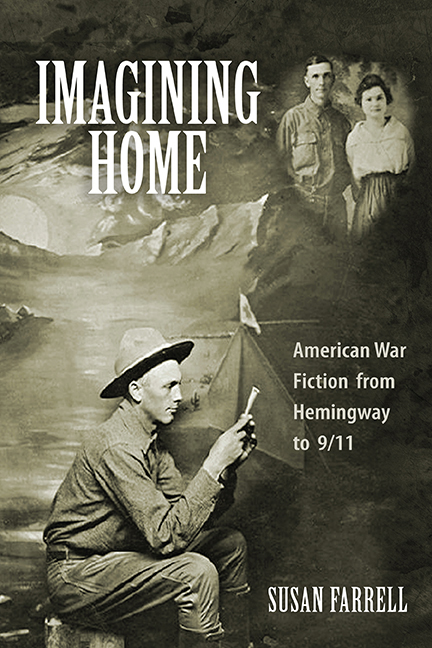Book contents
- Frontmatter
- Contents
- Acknowledgments
- Introduction
- 1 “Isn't It Pretty to Think So?”: Ernest Hemingway's Impossible Homes
- 2 A “Nation of Two”: Constructing Worlds through Narrative in the Work of Kurt Vonnegut
- 3 “It Wasn't a War Story. It Was a Love Story”: Tim O'Brien and the Ethics of Home
- 4 “A Hole in the Middle of Me”: Shattered Homes in Post-9/11 Literature
- Afterword
- Notes
- Works Cited
- Index
1 - “Isn't It Pretty to Think So?”: Ernest Hemingway's Impossible Homes
Published online by Cambridge University Press: 25 August 2018
- Frontmatter
- Contents
- Acknowledgments
- Introduction
- 1 “Isn't It Pretty to Think So?”: Ernest Hemingway's Impossible Homes
- 2 A “Nation of Two”: Constructing Worlds through Narrative in the Work of Kurt Vonnegut
- 3 “It Wasn't a War Story. It Was a Love Story”: Tim O'Brien and the Ethics of Home
- 4 “A Hole in the Middle of Me”: Shattered Homes in Post-9/11 Literature
- Afterword
- Notes
- Works Cited
- Index
Summary
Part I: Introduction
WHILE ERNEST HEMINGWAY has long had a popular reputation as an ultramasculine scribe of war, bullfighting, big-game hunting, and fishing, whose women characters could be typified as “Mothers, Nurses, Bitches, Girls, and Devils,” as the title of one well-known essay asserts, more recent criticism tends to argue for a much more nuanced reading of Hemingway and gender. This chapter, partly inspired by new feminist analyses of Hemingway's work, examines the relationship between war and gender expectations in three of the writer's best-known novels, The Sun Also Rises, A Farewell to Arms, and For Whom the Bell Tolls. In each of these works, Hemingway's male soldiers repeatedly try to create safe, domestic spaces for themselves while at war or while suffering the repercussions of war. Jake Barnes longs for a relationship with Brett Ashley in The Sun Also Rises, a traditional home and family denied him following his injury in the war. Frederic Henry in A Farewell to Arms, in an attempt to forge a “separate peace” from the war, deserts the Italian army and flees to Switzerland with Catherine Barkley, where they set up a makeshift home. And Robert Jordan in For Whom the Bell Tolls pretends the Spanish rebel Maria is his wife and imagines the home they will create together, all the while living in a cave and planning anti-Fascist attacks with a small band of Republican guerrillas during the Spanish Civil War. Moreover, the central women in these novels are damaged and suffering as well. Catherine and Maria, in fact, start the novels as more war damaged than either Frederic Henry or Robert Jordan. Like Tim O'Brien's frightened Vietnam War soldiers later in the century, these women frequently long to heal their trauma by uniting wholly with an Other, often aspiring to an androgynous appearance to symbolize a merging of selves with a male partner. But all three of the novels finally offer a tragic vision in which such unity is impossible, in which the trauma of war destroys the possibility of home. Old gender roles, upon which the traditional home were based, no longer make sense. In this new world, war does not make men heroic nor does domesticity make true women.
- Type
- Chapter
- Information
- Imagining HomeAmerican War Fiction from Hemingway to 9/11, pp. 16 - 60Publisher: Boydell & BrewerPrint publication year: 2017



